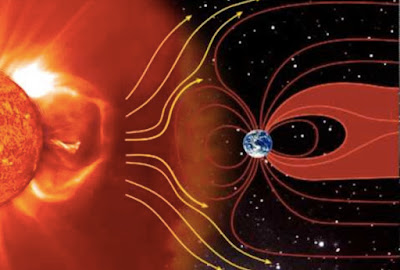Gamma ray spectroscopy is widely utilized across various
industries such as healthcare, environmental monitoring, food processing, and
homeland security. Gamma spectroscopy finds applications ranging from medical
imaging to monitoring nuclear power plants and detecting illicit radiation
sources. It helps to analyze the quantity and energy of gamma rays emitted by a
radioactive source and derive valuable insights about its elemental
composition.
The global gamma ray spectroscopy market
is estimated to be valued at US$ 1,301.1 million in 2024 and is expected to
exhibit a CAGR of 7.2% over the forecast period of 2024 to 2031.
The growing need for safety, quality and regulatory
compliance across industries is fueling the demand for
Gamma
Ray Spectroscopy Market Trends. It allows non-destructive detection of
hazardous radioactive substances while maintaining regulatory standards.
Moreover, rising healthcare spending and increasing usage of nuclear medical
imaging techniques such as SPECT and PET scans are significantly boosting
market growth.
Key Takeaways
Key Players
Key players operating in the gamma ray spectroscopy market
are Thermo Fisher Scientific Inc., Mirion Technologies, Inc., AMETEK, Inc.
(Ortec), Flir Systems, Inc., Canberra Industries, Inc., Ludlum Measurements,
Inc., Berthold Technologies GmbH & Co. KG, Hitachi, Ltd., LaBr3(Ce) –
Saint-Gobain Crystals, Baltic Scientific Instruments, Rigaku Corporation,
Atomtex SPE, Fuji Electric Co., Ltd., LND, Inc., BSI, Polimaster Inc., and
Advanced Measurement Technology. These companies are focusing on new product
launches and strategic collaborations to strengthen their market position.
Key Opportunities
The key opportunities in the gamma ray spectroscopy market
include expanding applications in medical imaging, homeland security, nuclear
power monitoring, and research & development activities. Growing
investments from both public and private sectors are fueling new product
innovations.
Global Expansion
Significant growth opportunities exist in developing regions
such as Asia Pacific and Latin America owing to increasing healthcare spending,
nuclear power generation, and industrialization. Key players are actively
pursuing global expansion strategies through export, foreign direct
investments, and partnerships with local players.
Market Drivers
Surging Demand from Healthcare Sector: Growing usage of
gamma cameras for SPECT and PET imaging procedures across hospitals and
diagnostic centers is a key driver. Nuclear medical imaging finds wide usage in
cancer detection and neurological disorders diagnosis.
Stringent Regulations Regarding Radiation Safety: Strict guidelines pertaining
to industrial and medical radiation safety are propelling the need for
sensitive and accurate gamma spectroscopy equipment across industries. This
ensures regulatory compliance with respect to hazardous materials detection and
environmental monitoring.
Market Restraints
High Procurement and Maintenance Cost: Gamma ray
spectroscopy instruments have high initial and operating costs owing to complex
technology involved. This could limit widespread adoption across developing
economies with budget constraints.
Requirement of Skilled Professionals: Gamma spectroscopy technology requires
specialists for its operation and data analysis. Scarcity of well-trained
personnel poses a major challenge, especially in remote locations.
Segment
Analysis
The gamma ray spectroscopy market is dominated by
spectroscopy systems and devices. This segment occupied more than 40% share of
the overall market in 2024. Gamma ray spectroscopy systems and devices find
widespread application in healthcare, homeland security, environmental
monitoring, manufacturing, and scientific research. They help in identification
and quantitative analysis of different elements and isotopes in materials.
Characterization of collected data from detectors helps in obtaining chemical,
elemental, and isotopic information about materials. The dominance of
spectroscopy systems and devices segment can be attributed to rising adoption
of these systems across industries for material characterization and analysis.
Global Analysis
On the basis of region, North America dominated the Gamma
Ray Spectroscopy Market Regional Analysis in 2024 with over 35% share.
The growth in the region is driven by strong presence of major market players,
rising healthcare and scientific research spending, and growing threat of
nuclear proliferation. Europe followed North America and occupied around 28% share
in 2024. Ongoing initiatives by the European Commission to strengthen nuclear
non-proliferation and develop medical isotopes have been boosting the market.
Asia Pacific is estimated to witness fastest growth during the forecast period.
Rising petrochemical production, presence of nuclear facilities, increasing
radiological safety regulations, and expanding manufacturing industry have been
driving the demand for gamma ray spectroscopy solutions in the region.
Get More
Insights on- Gamma
Ray Spectroscopy Market
Explore Related
Article- Data
Center Networking Market
About
Author:
Money
Singh is a seasoned
content writer with over four years of experience in the market research
sector. Her expertise spans various industries, including food and beverages,
biotechnology, chemical and materials, defense and aerospace, consumer goods,
etc. (https://www.linkedin.com/in/money-singh-590844163)




Comments
Post a Comment